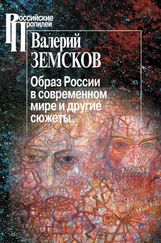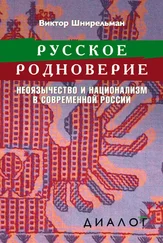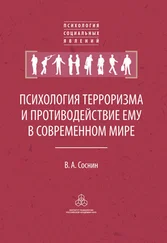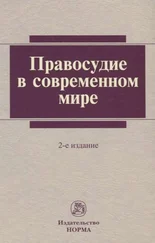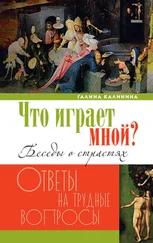Cecil, R. 1972. The myth of the Master Race: Alfred Rosenberg and Nazi ideology. London: B. T. Batsford.
Chakrabarti, D. K. 1994. The Aryan hypothesis in Indian archaeology // Manthan, vol. 15, no. 2–3: 141–146.
Chandler, A. R. 1968. Rosenberg’s Nazi myth. N. Y.: Greenwood Press.
Clavel F. – T. B. 1843. Histoire pittoresque de la Franc-maçonnerie et des Sociétés secretes anciennes et moderns. Paris: Pagnerre.
Clifton, Chas S. 2006. Her hidden children: the rise of Wicca and paganism in America. Lanham, MD: AltaMira.
Cole, John R. 1980. Cult archaeology and unscientific method and theory // M. Schiffer (ed.). Advances in archaeological method and theory. Vol. 3. P. 1 – 33. N. Y.: Academic Press.
Conte, Édouard, et Essner, Cornelia 1995. La quête de la race. Une anthropologie du Nazisme. Paris: Hachette Livre.
Conway J. S. 1968. The Nazi persecution of the Churches, 1933–1945. London: Weidenfeld and Nicolson.
Černy, V. 1995. Vyvoj a zlociny panslavismu. Praha: Institut pro stredoevropskou kulturu a politiku.
Davies, Alan T. 1975. The Aryan Christ: a motif in Christian anti-Semitism // Journal of Ecumenical studies, vol. 12, no. 4: 569–579.
Davies, Alan T. 1981. The Aryan myth: its religious significance // Studies in religion, vol. 10, no. 3: 287–298.
Dayananda, S. 1981. The light of truth. Allahabad: Dr Ratna Kumari Svadhyaya Sansthana.
Del Boca, Angelo and Giovana, Mario 1969. Fascism today. A world survey. N. Y.: Random House.
Demoule, Jean-Paul 2014. Mais où sont passés les Indo-Européens? Le mythe d’origine de l’Occident. Seuil: La Librairie du XXIe siècle.
Diat, Frederique 1984. Olzhas Sulejmenov: «Az i Ja» // Central Asian Survey. Vol. 3, No. 1: 101–121.
Đorđević, Tihomir R. 1923. Naš narodni život. Belgrade: Srpska književna zadruga.
Duchinski, E. – H. 1858. Zasady Dziejow Polski i innych Krajow Slowianskich i Moskwy. Czesc 1. Paris.
Duchinski, E. – H. 1864. Necessite des reformes dans d’exposition de l’histoire des peuples aryas-europeens et tourans particulierement des Slaves et des Moscovites. Paris: Friedrich Klincksieck.
Dulov, V. 2013. Bulgarian society and the diversity of Pagan and Neo-pagan themes // Scott Simpson and Kaarina Aitamurto (eds.). Modern Pagan and Native Faith Movements in Central and Eastern Europe, p. 195–212. Durham, UK: Acumen.
Dumont, Louis 1994. German Ideology. From France to Germany and back. Chicago and London: University of Chicago Press.
Dunlop, John B. 1983. The faces of contemporary Russian nationalism. Princeton, N. J.: Princeton Univ. Press.
Eisenberg, B. 1982. The Scandinavians // J. S. Roucek and B. Eisenberg (eds.). America’s ethnic politics, p. 323–343. Greenwich: Greenwood Press.
Elst, Konrad. 1993. Indigenous Indians: Agastya to Ambedkar. New Delhi: Voice of India.
Embree, A. T. 1988. India’s search for national identity. Delhi: Chanakya Publications.
Erdosy, G. (ed.). 1995. The Indo-Aryans of Ancient South Asia: language, material culture and ethnicity. Berlin: Walter de Gruyter.
Ferguson, M. 1981. The Aquarian conspiracy. Personal and social transformation in the 1980s. London: Routledge and Kegan Paul.
Fest, J. C. 1979. The face of the Third Reich. London: Penguin Books.
Fetten, F. G. 2000. Archaeology and anthropology in Germany before 1945 // H. Härke (ed.). Archaeology, Ideology and Society. The German Experience, p. 140–179. Frankfurt am Main: Peterlang.
Field, Geoffrey G. 1981. Evangelist of race: the Germanic vision of Houston Stewart Chamberlain. N. Y.: Columbia University Press.
Figgis, John Neville 1917. The will to freedom, or the Gospel of Nietsche and the Gospel of Christ. London: Longmans, Green and Co.
Figueira, Dorothy M. 2002. Aryans, Jews, Brahmins: theorizing authority through myths of identity. Albany: State University of New York Press.
Fox, Richard G. 1990. Hindu nationalism in the making, or the rise of the Hindian // R. G. Fox (ed.). Nationalist ideologies and the production of national cultures, p. 63–80. Washington, D. C.: American Ethnological Society.
Frawley, D. 1994. The myth of the Aryan invasion of India. New Delhi: Voice of India.
Freed, Stanley A. and Ruth S. Freed 1980. Origin of the swastika // Natural History, vol. 89, no. 1: 68–75.
Fry, C. L. 1990. «What God doth the wizard pray to»: Neo-Pagan witchcraft and fantasy fiction // Extrapolation, vol. 31, no. 4: 333–346.
Gardell, Mattias 2005. White racist religions in the United States: from Christian Identity to Wolf Age Pagans // James R. Lewis, J. A. Petersen (eds.). Controversial new religions, p. 387–422. Oxford; Oxford Univ. Press.
Gimbutas, Maria 1977. The first wave of Euroasian steppe pastoralists into Copper Age Europe // The Journal of Indo-European Studies, vol. 5, no. 4: 277–338.
Gimbutas, Maria 1985. Primary and secondary homeland of the Indo-Europeans // The Journal of Indo-European Studies, vol. 13, no. 1–2: 185–202.
Godwin, Joscelyn 1993. Arktos. The Polar myth in scientific symbolism, and Nazi survival. London: Thames and Hudson.
Goel, S. R. 1993. Hindus and Hinduism. New Delhi: Voice of India.
Goldstein, J. A. 1979. On racism and anti-Semitism in Occult and Nazism // Yad Vashem Studies, vol. 13: 53–72.
Golwalkar, M. S. 1939. We, or our nationhood defined. Nagpur: Bharat publications.
Gonda, J. 1975. Vedic literature. Wiesbaden.
Goodrick-Clark, Nicholas 1998. Hitler’s priestess. Savitri Devi, the Hindu-Aryan myth, and Neo-Nazism. New York: New York University Press.
Goodrick-Clark, Nicholas 2002. Black sun. Aryan cults, esoteric Nazism and the politics of identity. N. Y.: New York University Press.
Gorshenina S. 2012. L’archéologie russe en Asie Centrale en situation coloniale: quelques approaches // Etudes de Lettres. Etudes pontiques. Histoire, historiographie et sites archéologiques du bassin de la mer Noire (sur la dir. de Pascal Burgunder), Université de Lausanne, Institut d’archéologie, n° 290, no. 1–2. P. 183–219.
Gorshenina S., Rapin C. 2001. De Kaboul à Samarcande. Les archéologues en Asie Centrale. Paris: Gallimard.
Gould, W. 2004. Hindu nationalism and the language of politics in late colonial India. Cambridge: Cambridge Univ. Press.
Grant, W. J. 2005. The space of the nation: an examination of the spatial productions of Hindu nationalism // Nationalism and ethnic politics, vol. 11: 321–347.
Griffin, Roger 1993. Europe for the Europeans: fascist myths of the New Order, 1922–1992. Oxford ( http://home.alphalink.com.au/~radnat/theoroes-right/theory1.html).
Griffiths, F. 1991. The Arctic in the Russian identity // L. W. Brigham (ed.). The Soviet maritime Arctic, p. 83 – 107. London: Belhaven Press.
Gugenberger, Eduard & Schweidlenka, Roman 1993. Die Fäden der Nornen. Zur Macht der Mythen in politischen Bewegungen. Wien: Verlag für Gesellschaftskritik.
Guseynova, Sevil 2008. Presentations of Islam in secondary secular schools in contemporary Azerbaijan // Internationale Schulbuchforschung. Jahrg. 4, Bd. 30: 841–853.
Hagemeister, Michael 1997. Russian cosmism in the 1920s and today // B. G. Rosenthal (ed.). The Occult in Russian and Soviet culture, p. 185–202. Ithaca and London: Cornell Univ. Press.
Hagemeister, Michael 2004. Anti-Semitism, occultism and theories of conspiracy in contemporary Russia – the case of Ilya Glazunov // V. Paperni, W. Moskovich (eds.). Anti-Semitism and Philo-Semitism in the Slavic World and Western Europe, p. 235–241. Haifa-Jerusalem.
Hagemeister, Michael 2011. The conquest of space and the bliss of the atoms: Konstantin Tsiolkovskii // E. Maurer, J. Richers, M. Rüthers, C. Scheide (eds.). Soviet space culture: Cosmic enthusiasm in socialist societies, p. 27–41. N. Y.: Palgrave MacMillan.
Читать дальше
Конец ознакомительного отрывка
Купить книгу
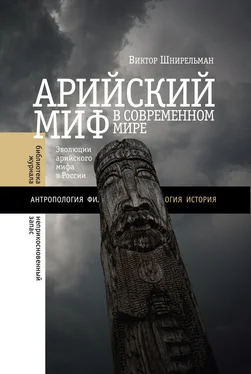
![Евгений Примаков - Россия в современном мире. Прошлое, настоящее, будущее [сборник]](/books/27003/evgenij-primakov-rossiya-v-sovremennom-mire-proshlo-thumb.webp)


